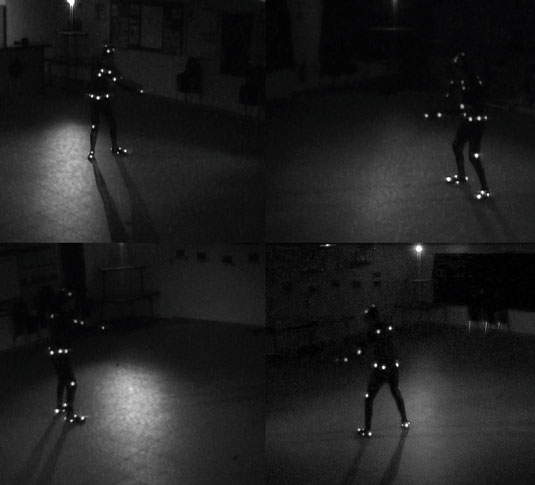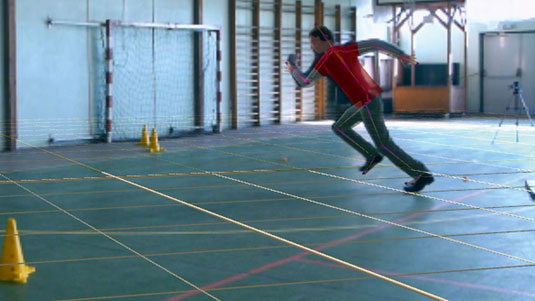How to make your own motion capture studio
The director of a Star Wars fan film explains how to set up your own mocap studio.
Versus: The Way to Shadow, which you can watch above, is a 41-minute-long Star Wars fan film directed by Nicolas Santini, and he was in charge of all the VFX.
You can find out more about that in the article How to create your own Star Wars movie. But here Santini explains how he went about creating his own motion capture studio for the project...
01. Video based motion capture

Using a motion capture studio is expensive, but there are many low cost motion capture solutions on the market.
For this project I used video-based motion capture with four digital cameras, a DIY mocap suit and a fairly large capture area for the actors. These days, most of the matchmoving software available offers these mocap options.
02. Shooting

Some basic principles to follow. Shoot indoors to get a nice light setup, ideally in a grey or black painted room. The mocap suit needs to match the background.

High frame rate cameras are better if you shoot fast action. We decided to shoot in a dark environment, the only light sources came from the blue LED under our cameras, or what we called 'infrared cameras of the poor'.
03. Markers placement and size

If you have only four cameras, it's important to place your markers on the front and on the back of your mocap suit. This way you'll avoid the mistake of having nothing to analyse once in front of your tracking software.
Daily design news, reviews, how-tos and more, as picked by the editors.
Choose the trackers' size depending on the camera resolution you use. We had 5cm diameter trackers for our old SD DV cameras.
04. Other solutions

You can't afford a full rig of quality cameras? There are other ways, so don't worry. iPisoft DMC is one of your best options and also it's a markerless solution. It works with PSEye's cameras and offers surprisingly good results if you follow all the rules, like getting the capture area size and the light conditions just right.
05. Depth tracking

The other really useful thing about iPisoft DMC is the ability to track motion from one or two Kinect cameras. The only downside is the restrictive capture area, which is definitely not large enough to record long actions like a walk or a run. However, the software allows you to export animations in a wide array of usable file formats.
06. Capture everything

The great thing about video-based motion capture is you're not restricted by capturing your motion separately from shooting your film, you can do that task on set!

Be sure to use visible enough trackers and find places to hide your 'tracking cameras'. Of course, you're not forced to settle for tracking the human body alone – it also works on animals!
Words: Nicolas Brunet
Nicolas Brunet is a self-taught 3D and VFX artist who has previously created CG commercials and shorts, and is now focusing on becoming a director. This article originally appeared in 3D World magazine.
Limited edition Star Wars art book

From a galaxy far, far away comes The Art of Film: Star Wars special.
In volume one of this new series we showcase a stunning selection of artwork inspired by the Star Wars movies – from 1977 to the present day.
From posters to portraits, and comics to illustrations, this lavish 180-page book showcases a selection of the world's best Star Wars art, both from official and fan artists. Presented in full colour on premium stock, it's also available with a hardback cover and gold foil detailing for the ultimate collector.
Secure your limited edition hardback here
Standard edition available here

The Creative Bloq team is made up of a group of art and design enthusiasts, and has changed and evolved since Creative Bloq began back in 2012. The current website team consists of eight full-time members of staff: Editor Georgia Coggan, Deputy Editor Rosie Hilder, Ecommerce Editor Beren Neale, Senior News Editor Daniel Piper, Editor, Digital Art and 3D Ian Dean, Tech Reviews Editor Erlingur Einarsson, Ecommerce Writer Beth Nicholls and Staff Writer Natalie Fear, as well as a roster of freelancers from around the world. The ImagineFX magazine team also pitch in, ensuring that content from leading digital art publication ImagineFX is represented on Creative Bloq.
